Managing bids in commercial construction can feel like herding cats. You’re juggling multiple projects, contacting dozens (or hundreds) of trade contractors, and trying to secure real coverage well before bid day. That’s where specialized bidding tools come in.
Two platforms often mentioned are BidMail and Downtobid—each offers a different approach to sending invitations, organizing plan documents, and following up with trade contractors. In this article, we’ll break down each platform’s key features, present them head-to-head, share real Reddit feedback, and help you decide which system best fits your workflow.
Note: If you want to leverage AI to send bid invites automatically, try Downtobid. Downtobid is an invitation to bid software that can uncover all trades needed to complete projects, and send personalized bid invites to boost response rates. Click here to upload a project for free.
Key Takeaways
- BidMail uses manual processes; Downtobid automates invites with AI personalization.
- Downtobid provides automated follow-ups; BidMail requires manual tracking of all responses.
- Downtobid's AI organizes planrooms by trade; BidMail offers basic document hosting.
- BidMail costs less for large teams ($3,500/year); Downtobid starts at $150/month.
- Downtobid gets higher engagement with verified databases versus BidMail's generic invites.
What is Downtobid?

Downtobid is a modern bidding software that uses AI to help Commercial General Contractors craft personalized invites and maintain accurate trade contractor data.
By organizing plan documents by scope and automating reminders for those who haven’t replied, Downtobid keeps coverage transparent and reduces last-minute scrambling. This approach aims to give GCs more time to focus on key estimating tasks instead of micromanaging the invitation process.
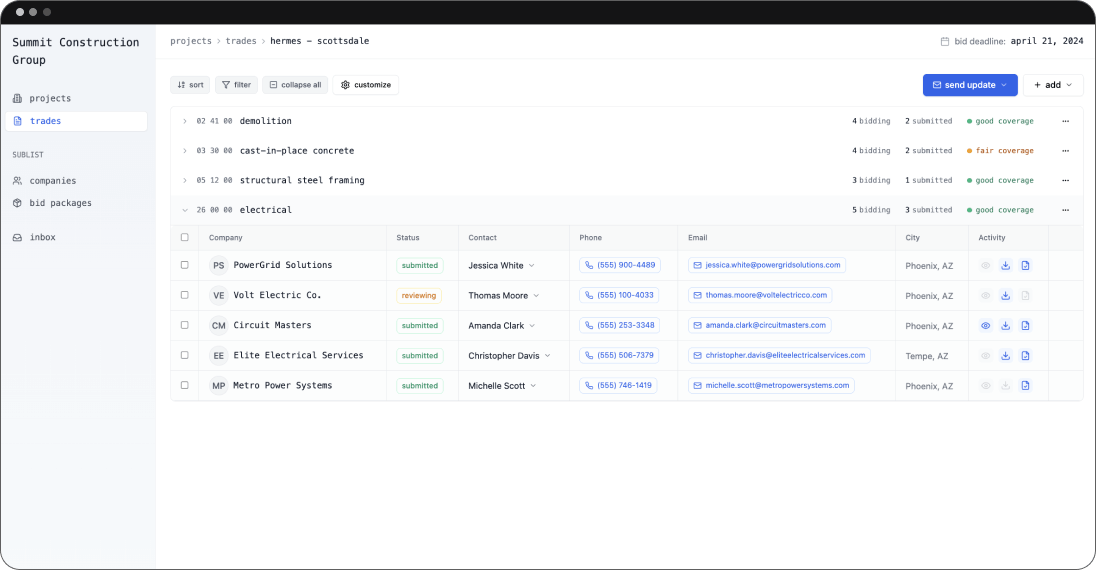
What is BidMail?
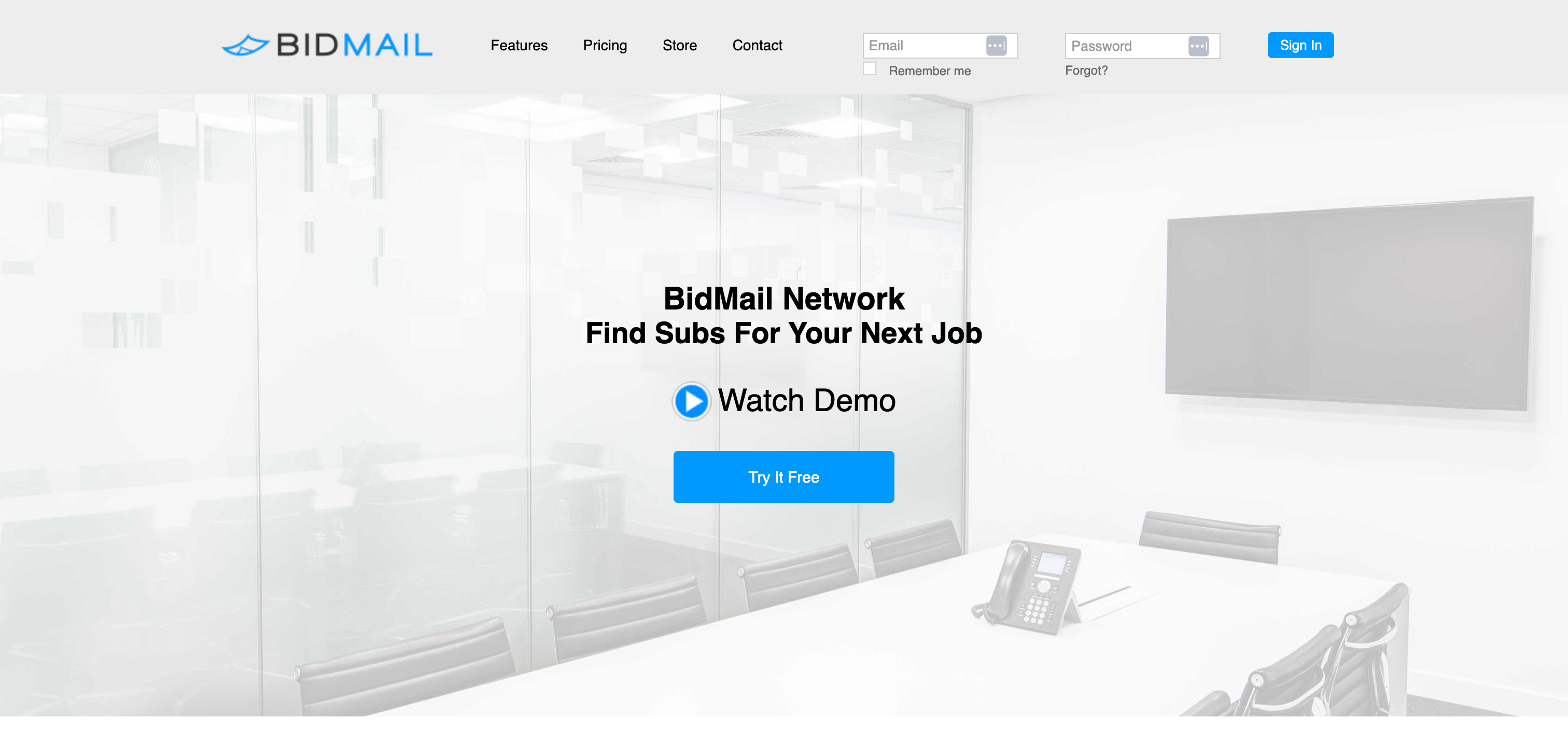
BidMail is an established platform for sending invitations to bid (ITBs) and hosting project documents. It offers a straightforward workflow where GCs can upload plans, invite trade contractors, and track basic engagement.
Many teams appreciate the simplicity and annual pricing structure, though it typically relies on manual oversight for tasks like verifying contacts or ensuring coverage before bid day.
It is an older project bidding software known for its simplicity and low-friction workflow, but many users have criticized it for being slow and outdated. For this reason, many folks search for BidMail alternatives.
Feature Breakdown: Downtobid
Downtobid takes a subcontractor centric approach when sending bid invites.
- Automated subcontractor matching based on location and qualifications
- Ensure you invite expanded bidder pool by matching against local subs via AI
- Self-cleaning, AI-powered subcontractor database
- Personalized bid invites to maximize subcontractor engagement
- Intuitive planroom organization with custom bid packages
- Automated bid follow up
AI-Driven Trade Suggestions
Downtobid analyzes your project plans and proposes which trades you need. This auto-generated list serves as a draft to ensure you’re not missing any critical scopes.
Bid Invites In Minutes
Generic invites are a major turn-off for trade contractors. Downtobid personalizes each ITB, highlighting why the recipient’s trade and location make them a good fit. The software sends customized bid invites and scope sheets in minutes.
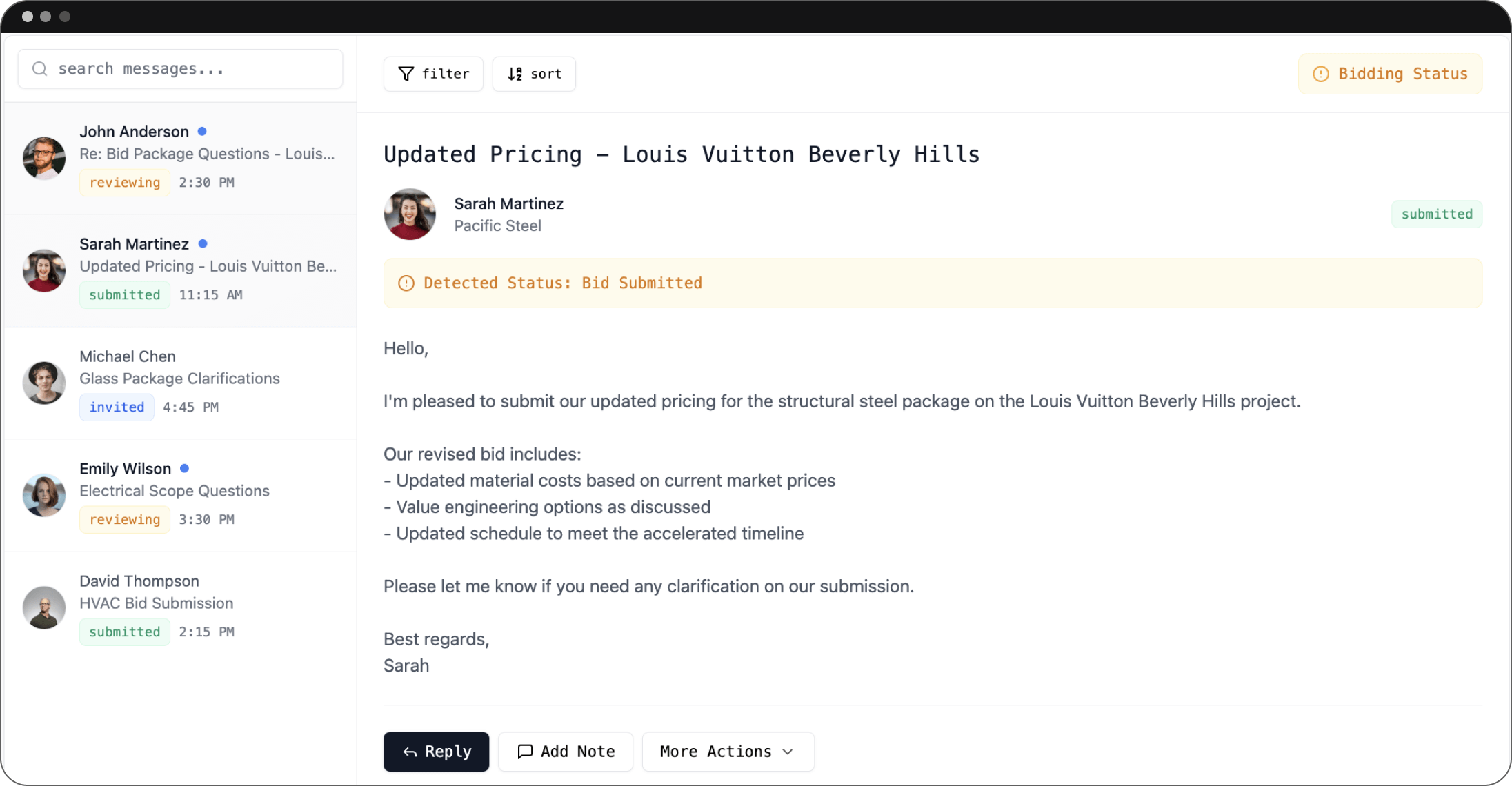
It also personalizes each invitation, using contractors' names for a more personal touch. There’s also no forced login—trade contractors can view your project right away.
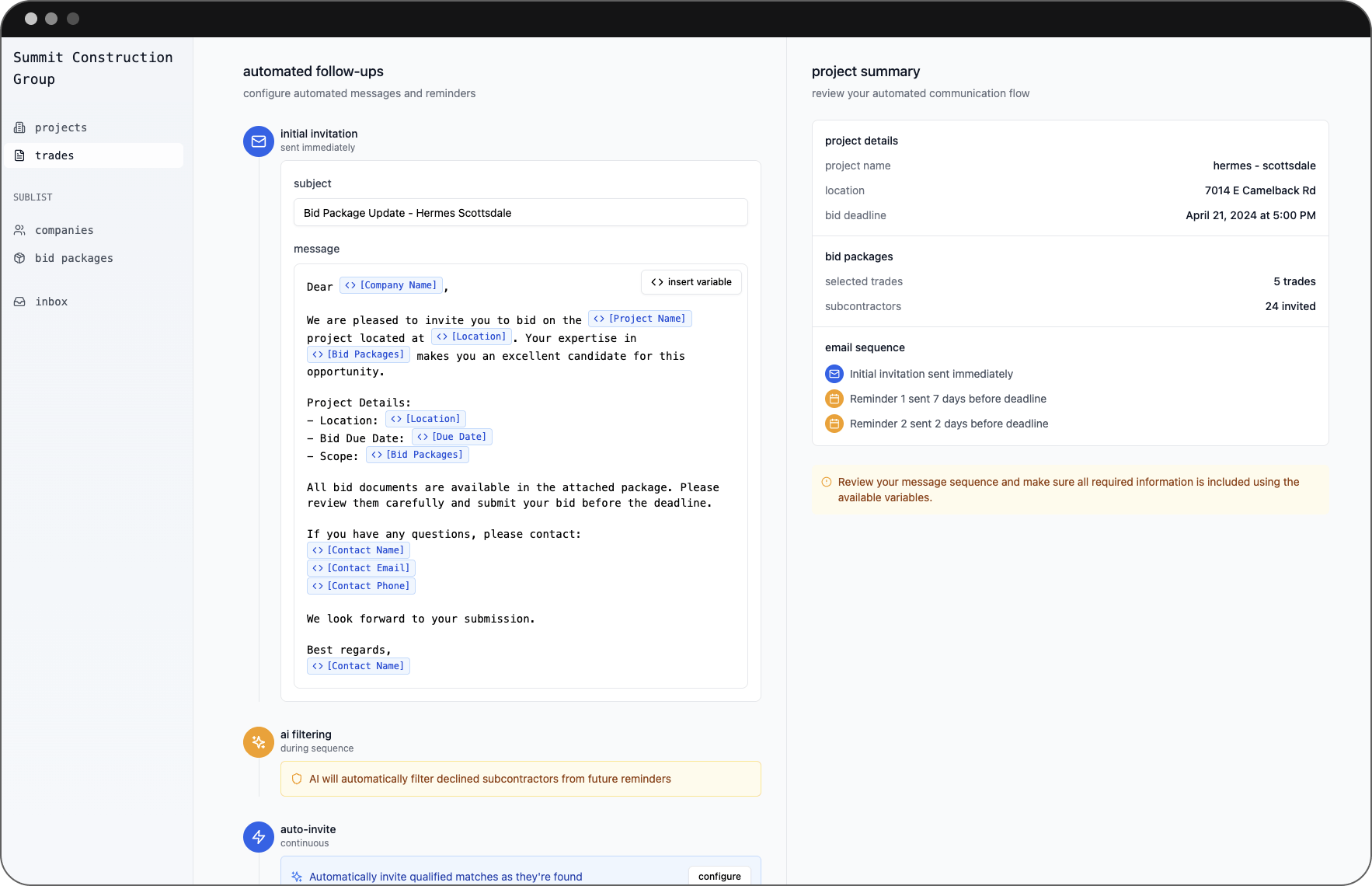
AI Sheeted Planroom for Simplicity
With Subcontractors being inundated with bid invites these days. It's imperative to make qualifying scope as easy as possible for your trade partners. Downtobid simplifies this process by allowing contractors to find and search scope directly within the planroom.
The planroom automatically groups project files (Plans, Specs, Photos, etc.) and labels them. Trades can jump straight to the relevant pages, reducing the time they spend searching through hundreds of sheets.
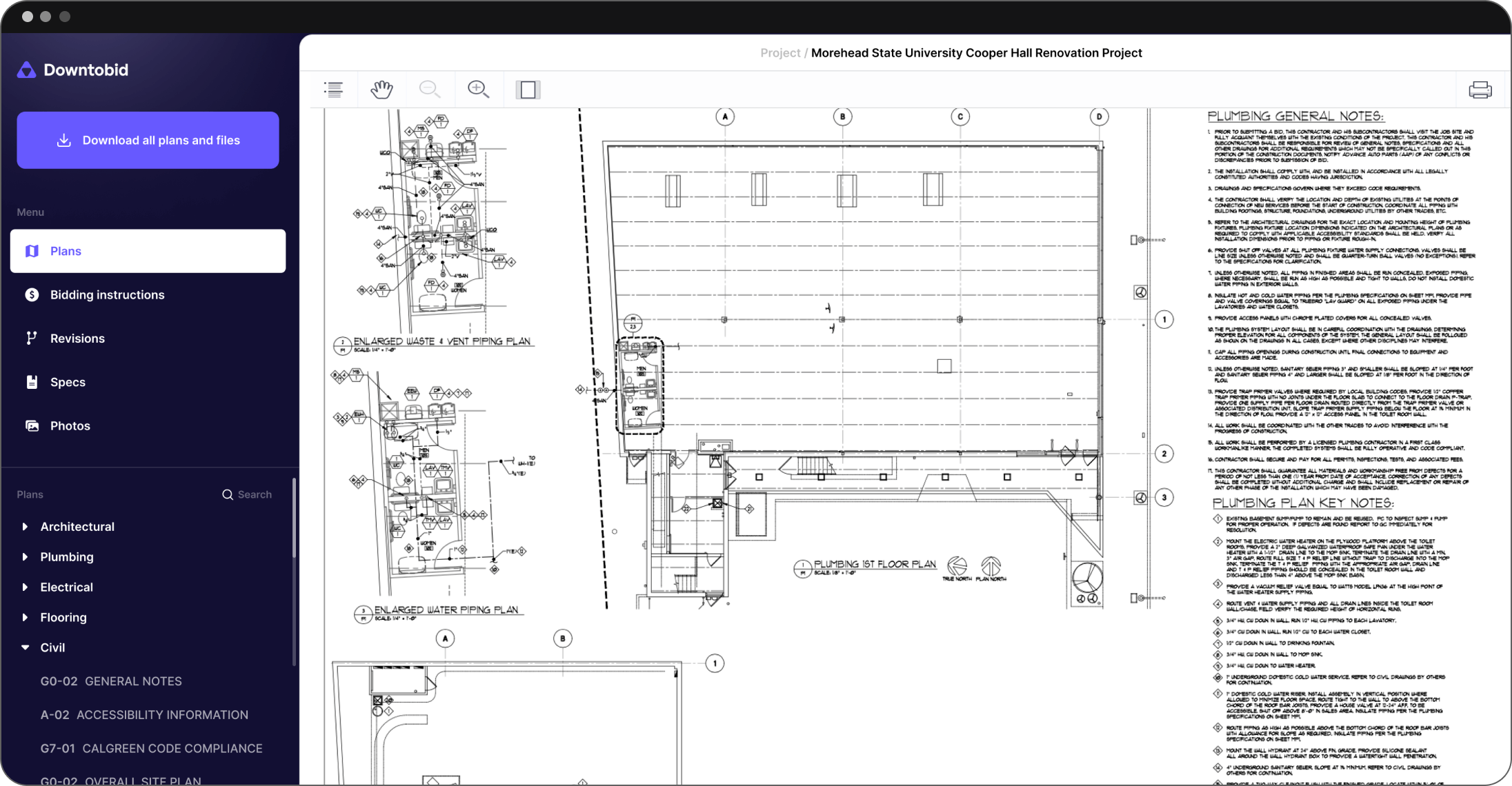
Proactive Coverage
Downtobid tracks whether a trade contractor has opened or responded to an invite. If they haven’t, it sends reminders automatically. You can see “Bidding,” “Interested,” or “Not Bidding” at a glance, which reduces the chance of last-minute coverage gaps.
Verified Trade Contractor Database
You’re not stuck with a stale contact list. Downtobid uses AI checks and periodic verifications to keep trade contractor details current, so you’re less likely to invite inactive companies or old emails.
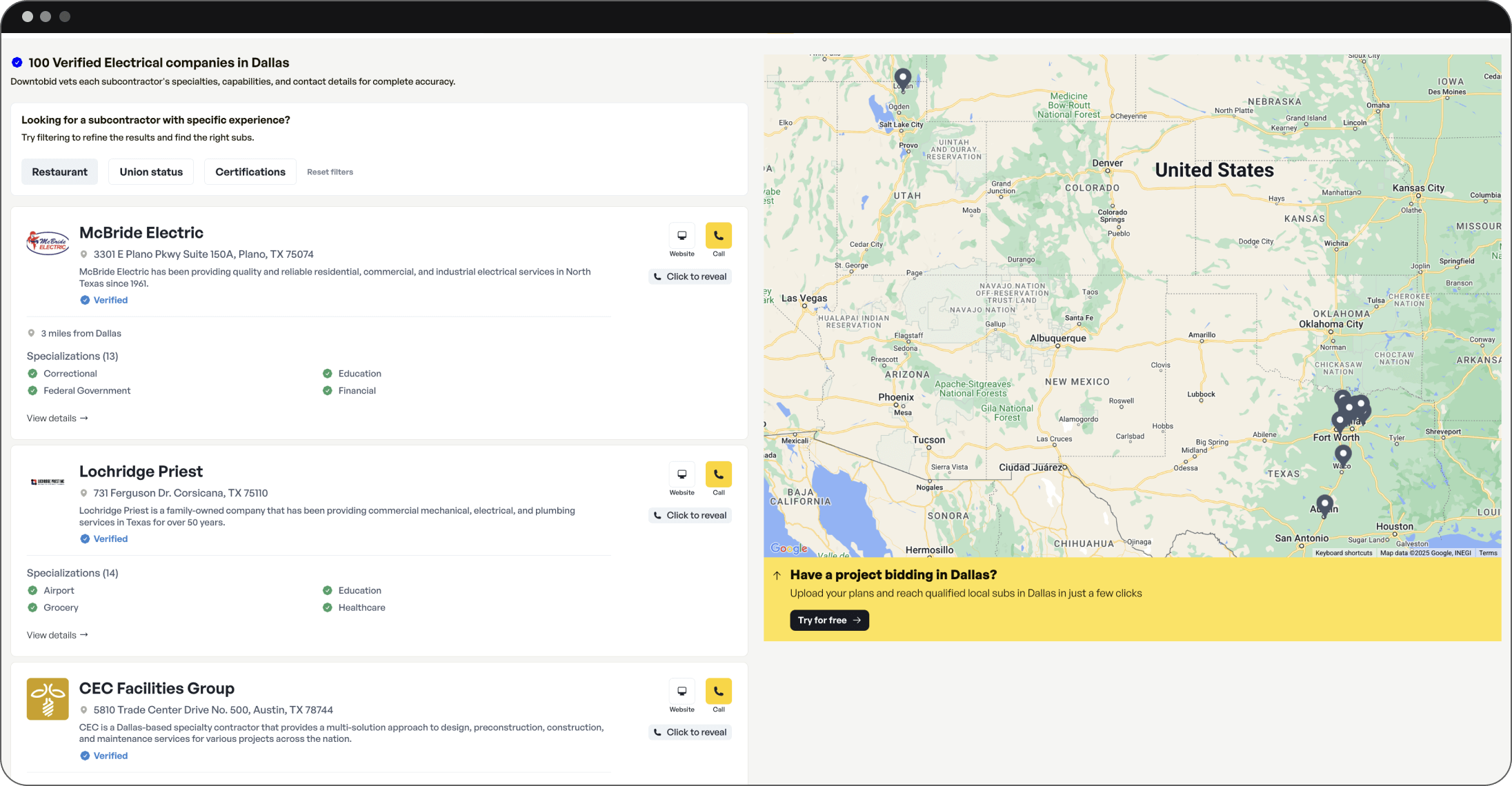
Who is Downtobid Best for?
Commercial general contractors specializing in complex projects.
- Estimators leverage Downtobid's AI to ensure comprehensive scope coverage, receiving a detailed summary of key trades and reducing the risk of missed details.
- Downtobid automatically suggests top-performing local subcontractors, streamlining the bid invitation process.
Check out these other construction bid management platforms.
Feature Breakdown: BidMail
- Simple user interface
- Web viewer for time-saving, efficient plan access.
- Time & Attendance feature for easy employee time tracking.
- Customizable bid proposal templates.
- Construction-specific time management software with BidMail Payroll.
BidMail's users are seeking product upgrades such as the reintroduction of a global bid filter, which is a highly desired feature. On top of that, there's criticism in terms of how slow BidMail's network is and the pace of user interface updates.
Basic, Familiar Workflow
BidMail has been around for a while, and many GCs find it straightforward. You upload your plans, send invitations, and share documents in a single spot. If you prefer a more traditional approach, you may find it user-friendly.
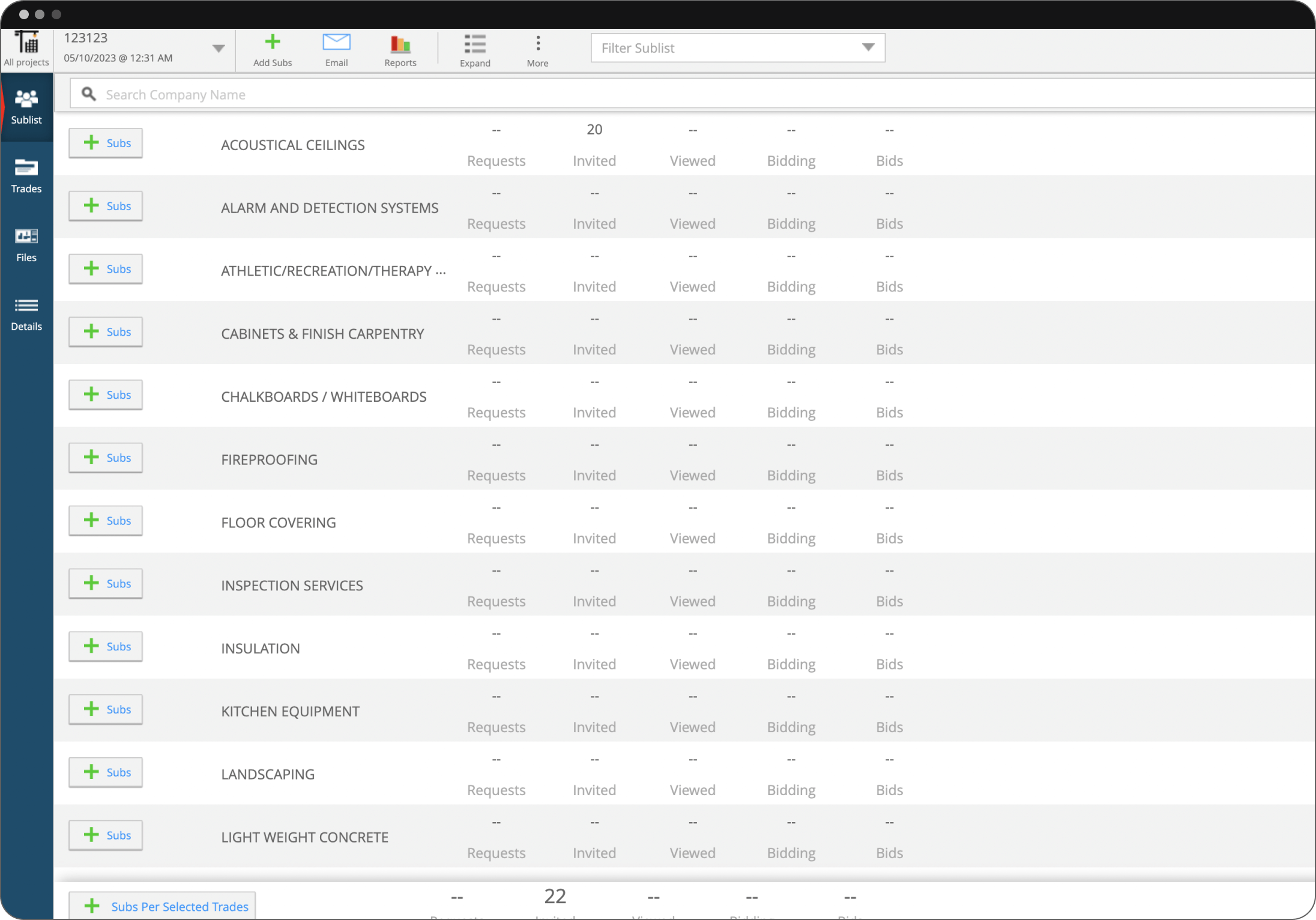
Self-Managed Trade Lists
With BidMail, you typically bring your own database of trade contractors. While that puts you in full control, it also means you’re responsible for keeping contact info up to date.
Standard Planroom
BidMail’s planroom lets you host and distribute project documents. BidMail does have sheeting functionality which allows contractors to find the specified pages. Some users find it sluggish with large plan sets, and trade contractors might have to download entire files to find their pages. Still, if you’re used to it, the workflow remains consistent – overall, not bad.
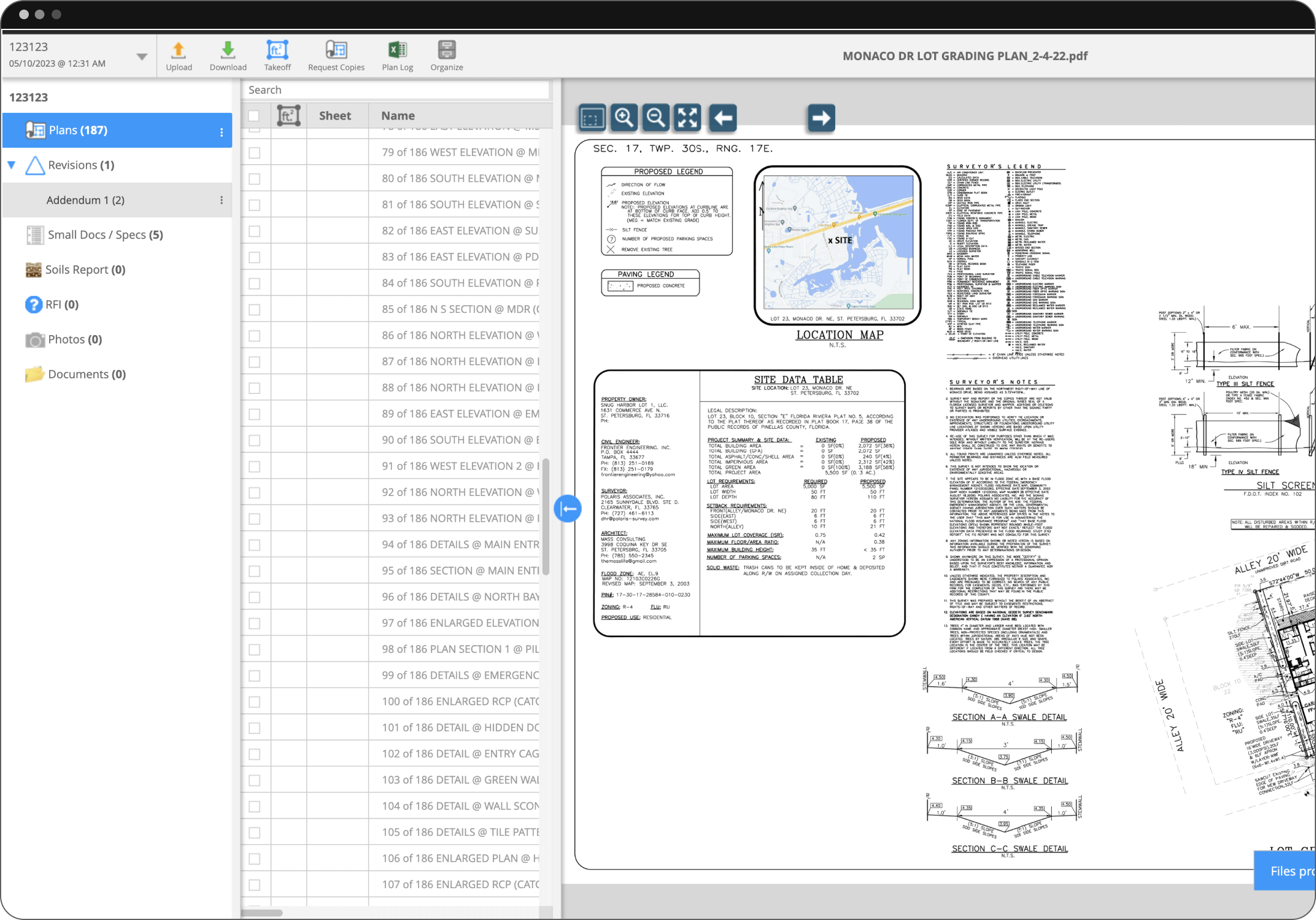
Manual Follow-Ups
If you want to see who’s bidding or remind trades to respond, you’ll have to do it manually. There’s no built-in automation for nudging trades who haven’t replied, so GCs often rely on phone calls or repeated email blasts.
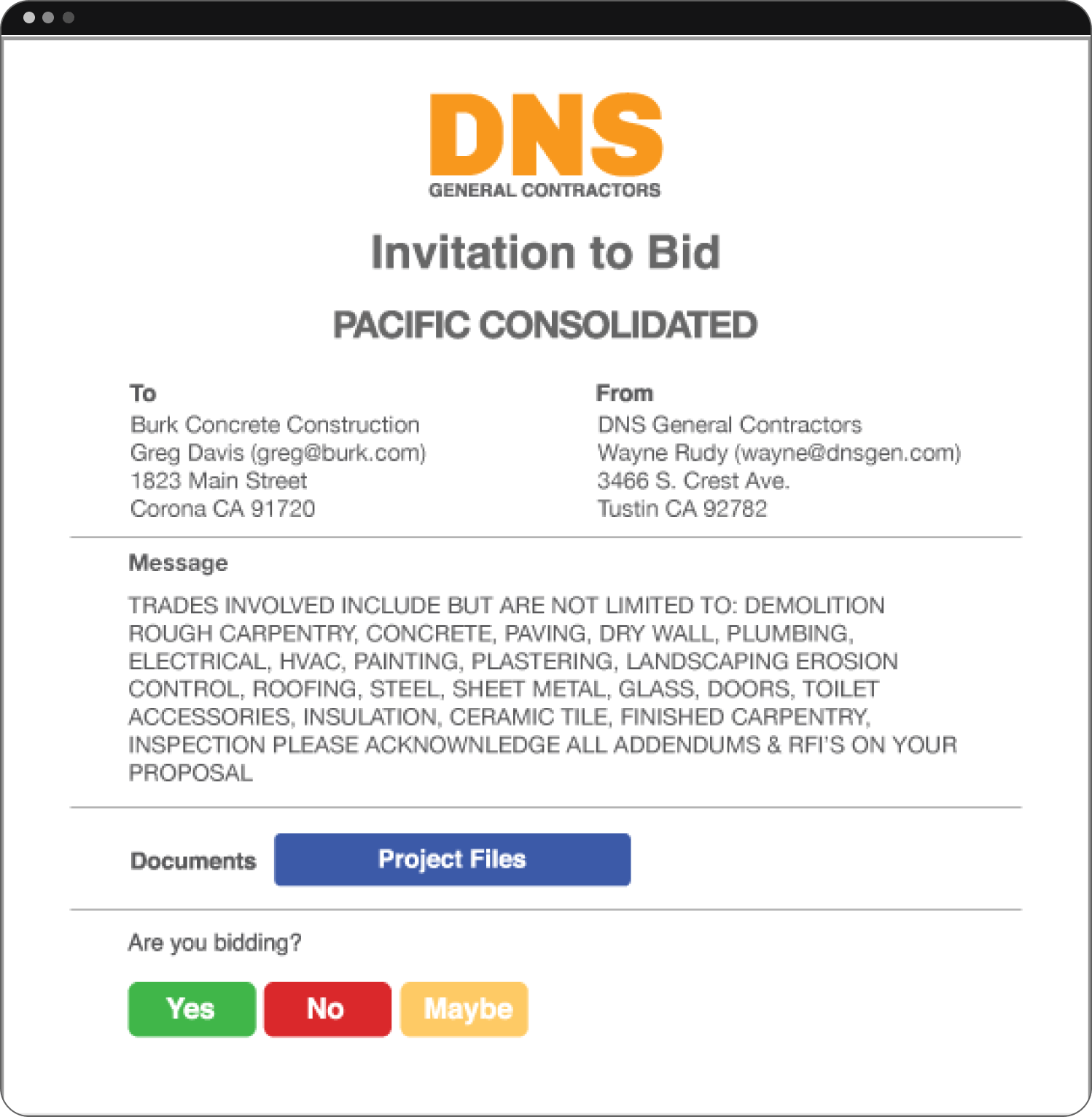
Potentially Cheaper for Large Teams
Some GCs report paying around $3,500 per year for 30+ users—a cost that can be lower than certain monthly per-user plans if your team is big enough. However, actual pricing can vary, so check directly with BidMail.
Functionality
BidMail's functionality centers on its customizable templates for various documents like Bid Invitations and Addenda, enhancing document access and subcontractor engagement. These templates allow easy access to bid documents, track subcontractor actions—such as email opens, plan views/downloads, and take-offs—streamlining the bid management process and communication flow.
Cost
BidMail's pricing ranges from a Free plan with basic features to an Enterprise option for advanced needs.
The Free plan covers 500 files, while paid plans offer more files and additional users at extra cost: the Business plan at $39/month for 1,000 files, the Professional plan at $79/month for 5,000 files, and the Enterprise plan at $179/month for unlimited files, each with a $10/month charge per extra user. These plans cater to businesses of different scales with varying feature sets.
BidMail vs. Downtobid: Features Compared
Both BidMail and Downtobid help GCs manage bid solicitation, but they take very different approaches to trade contractor coverage, bid engagement, and follow-ups. Let’s break down how they compare:
1. Trade Contractor Network & Coverage
Winner: Downtobid (for accuracy)
- BidMail: GCs typically import and manage their own lists. Because contacts aren’t automatically updated, bad or outdated emails can slip through.
- Downtobid: Maintains cleaner data with AI verification, so GCs focus on real, active trade contractors. Less time is wasted chasing dead contacts.
2. Bid Invite Engagement & Response Rates
Winner: Downtobid
- BidMail: Invites are basic and often generic, requiring trades to log in and sift through documents. This friction can lower response rates.
- Downtobid: Personalized invites, no forced account creation, and direct links to relevant pages make it easier for trades to say “yes.” Higher engagement typically follows.
3. Follow-Ups & Bid Coverage Tracking
Winner: Downtobid
- BidMail: No built-in automation for nudging non-responsive trades. GCs must manually track who opened, who’s bidding, and who needs a reminder.
- Downtobid: Sends automated follow-ups if a trade hasn’t replied. GCs see “Interested,” “Not Bidding,” or “Bidding” at a glance—reducing last-minute guesswork.
4. Planroom Navigation & Trade Contractor Experience
Winner: Downtobid
- BidMail: Offers a standard planroom, but it can be slow to load. Trades may have to download entire plan sets to find their pages.
- Downtobid: Automatically organizes sheets by trade and labels them. Contractors jump right to what they need, which saves time and boosts participation.
5. Overall Bid Coverage & Workflow Efficiency
Winner: Downtobid
- BidMail: Some GCs appreciate its simplicity, but missing automations means more manual work. If you have multiple projects, follow-ups can become a chore.
- Downtobid: From automated coverage tracking to AI-driven plan organization, it’s designed to keep GCs on top of every bid without frantic phone calls at the last minute.
6. Pricing & Value
Winner: BidMail for large teams, Downtobid for advanced features
- BidMail: Some GCs pay around $3,500/year for 30+ users—potentially lower if you have a big team needing many seats.
- Downtobid: Monthly plans start at $150/month for up to 3 users, $500/month for up to 10. This often comes out cheaper for small or mid-sized teams, but either way you get more automation and better data accuracy.
Bidmail vs. Downtobid: What Reddit Users Are Saying
We combed through a popular Reddit thread where estimators shared firsthand experiences:
On BidMail’s ease of use: “I’ve used SmartBid and BidMail—they’re pretty much identical. BidMail is more user friendly.”
On BidMail’s dated feel: “BidMail is SO archaic. I switched to another platform after a couple of weeks.”
The takeaway? Some GCs like BidMail’s straightforward workflow, but others find it outdated and slow compared to more modern platforms that offer automated follow-ups and better plan navigation.
Conclusion
Both BidMail and Downtobid aim to simplify the bidding process, but they cater to different needs.
Choose BidMail if:
- You’re fine managing trade lists yourself, don’t mind manual follow-ups, and want a potentially lower annual cost for larger teams. You’ll get a familiar interface and a basic planroom, but fewer automated features.
Choose Downtobid if:
- You want AI-suggested trade coverage, automatically updated contacts, and personalized ITBs that remove friction for trade contractors. You’ll pay a monthly fee, but you get automated follow-ups, a more organized planroom, and higher engagement.
Ultimately, your best pick depends on your budget, team size, and how much time you want to save on coverage tracking. If automation, data accuracy, and smoother trade engagement are top priorities, Downtobid is hard to beat. If you prefer a traditional system and don’t mind manual work, BidMail may still serve you well.
Either way, the goal is the same: fewer frantic calls on bid day and more reliable bids from the right trade contractors—so you can focus on winning projects, not chasing responses.